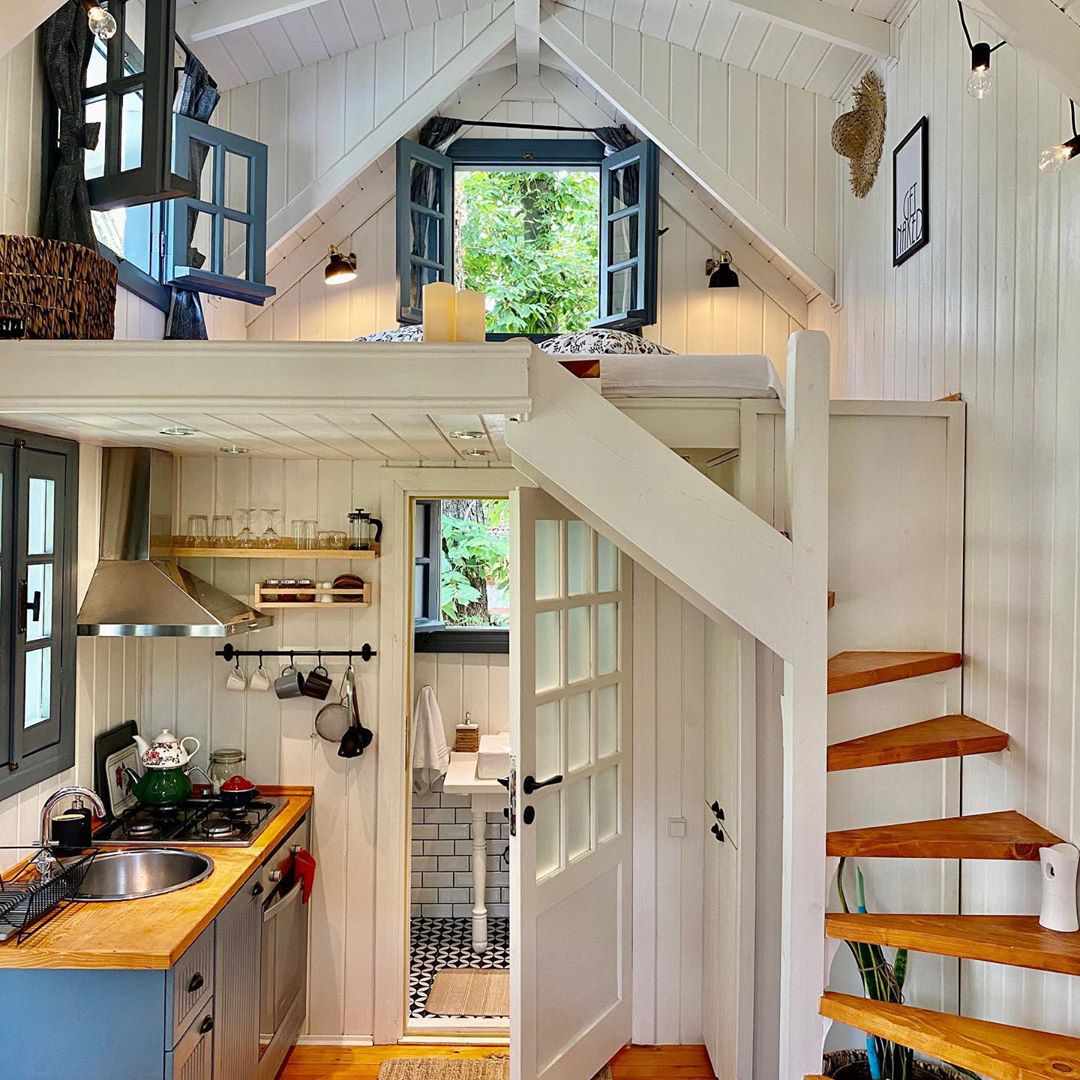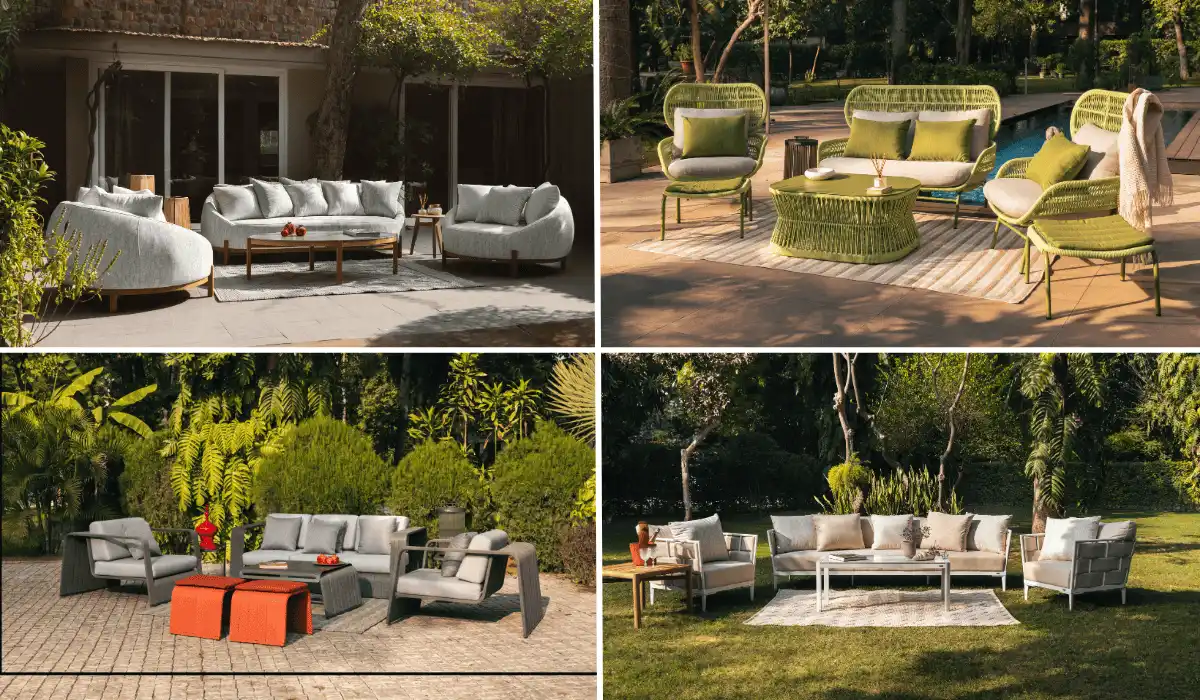What does decoding a tiny house mean? How does it tie into the “tiny house movement“? Tiny houses are trending around the world because of their versatility. Their popularity is nestled in the fact that they are economical and save space. They are flexible housing modules designed with multi-functional furniture. The area of a tiny house varies from 100 – 400 square feet (9.3 square metres- 37.2 square metres). It is a small house that accommodates a living area, kitchen, bedroom, and toilet. This system allows you to adopt compact living and have a smaller environmental footprint. The comfort of owning your own home at a reasonable cost and having a self-sufficient life makes the tiny house a preferred residential lifestyle for millennials.
Advantages of a Tiny House

In case of a tiny house, the idea of “Less is more” coined by architect Ludwig Mies Van de Rohe can be tweaked to “Less is enough”. A constrained amount of space is easy to clean and maintain as compared to a large area. Activities such as organizing furniture, folding, and laundry consume less time in a limited space. A tiny house is preferably designed for energy efficiency because there is less space to plan for a mechanical ventilation system. Thus, it uses passive cooling techniques to achieve thermal comfort. A small home also needs less energy to function. Making use of solar energy and indoor landscaping ideas can help reduce dependency on the grid.
A tiny house can also travel. Hence, it is favourable for people who like to lead a nomad lifestyle and explore new places. Since a small house has limited space, the storage area is limited and hence it can shelter fewer groceries and products. A healthy eating habit, energy-efficient appliances, and making the most out of the available resources make a tiny house a comforting space to live in. These advantages encourage people to adopt sustainable living. Embracing a minimalistic lifestyle does away the distractions and excessive spending on home decor ideas.
Disadvantages of a Tiny House

Technical Challenges
Tiny houses are non-compliant with the law and building construction codes in most countries. Their area does not qualify as the minimum area for a residence as prescribed by the local authorities. User safety and circulation become key factors in denying the construction permit. Although, some states in the United States acknowledge mobile tiny houses as recreational vehicles which can be parked at campsites. Since a tiny house is considered illegal, it is difficult to have a generous resale value for them. There are no defined standards on how a tiny house can be valued for sale and hence the owner is made to sell it for much less than its actual cost.
Functional Challenges
Alongside these technical challenges, a tiny house also faces functional issues. With a limited footprint, activities such as cooking and storage can be a struggle. The lack of storage supports a minimalistic lifestyle but also makes people run more to the market for essentials. The food needs to be cooked more often because cooking in bulk and storing for later does not seem viable.
Waste disposal is a significant challenge that a tiny house faces. A composting toilet is the most preferred choice for small houses because it has no plumbing. There are built-in chambers to keep solid and liquid waste separated so as to keep the smell in moderation. The chambers have to be emptied at regular intervals and need regular maintenance checks. Owning a tiny house on wheels means that one has to consider buying a towing truck. This vehicle should be sturdy enough to travel through difficult roads and manage the load of the house. Also, a mobile caravan requires constant repair and maintenance since it goes through extreme wear and tears.
Types of Tiny Houses

Skoolie Houses
The first category is a “Skoolie”. As the name suggests, this tiny house is a convertible school bus that transforms into a comfortable abode. Being able to travel in this Skoolie is an added bonus. Since a bus has windows by default, the amount of light and ventilation is good. The elongated expanse of a bus allows for the linear planning of spaces.
Shipping Container Houses
The second type of tiny house is a shipping container. Transforming containers into habitable spaces has been trending globally. The structural integrity of the container should be mapped well before cutting in openings. The rectangular form of a container house makes them suitable as storage units and swimming pool decks.
Granny Pod Houses
The third type is a granny pod whose idea finds its roots was to create a way for older people to live with family while maintaining their independence. The house has a front yard and supports all the ergonomic needs of an elderly couple.
Arch and A-Frame Houses
The fourth type is the Arch and A-Frame houses that are shaped in a triangular form and can be DIY. The arch or frame extends in a symmetrically inclined shape from the ground to the roof. The vaulted ceiling makes them suitable for areas with heavy rainfall and/or snowfall.
Cabin Houses
The fifth popular category is the cabin which is designed as small wooden houses in mountain regions that serve as a cocoon amidst the forest. Its interior design is rustic and clutter-free to provide more space for openings.
Tiny Houses in India
Tiny houses in India can be mapped in cities as well as deserted areas. Chawls and studio apartments are examples of tiny houses in urban areas. Whereas, independent houses will small footprints are examples of tiny houses in a rural context. Communities in places such as Auroville and Himachal Pradesh prefer minimalistic living and therefore live in small homes.
The concept of a tiny house is evolving as the need of the hour. With much scope for improvement, this idea is being modified to suit contextual needs. Although the tiny house movement began in the view of the economic crisis, it is now venturing into the luxury avenues by providing state-of-the-art interiors and facilities. International brands are promoting tiny houses not just as a trend but as a way of living.

Sources:
- 12 Tiny House Pros and Cons
- Pros and Cons of Tiny House Living: Why Live in a Tiny House?
- 7 Best Types of Tiny Homes
- A Beginner’s Guide to Different Types of Tiny Homes
- 11 Beautiful Types of Tiny Houses
Disclaimer: The information contained herein have been compiled or arrived at, based upon information obtained in good faith from sources believed to be reliable. The opinions expressed within the content are solely the author’s and can be subject to change. The image featured in this article is only for illustration purposes. If you wish the article to be removed or edited, please send an email to editor@biltrax.com
Discover more from Biltrax Media, A Biltrax Group venture
Subscribe to get the latest posts sent to your email.






















